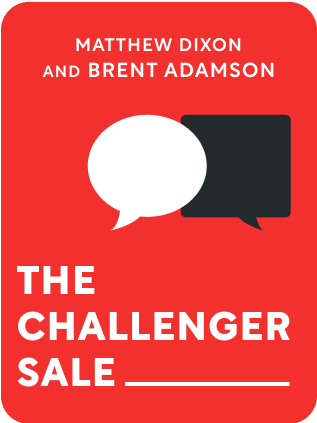

This article is an excerpt from the Shortform summary of "The Challenger Sale" by Matthew Dixon and Brent Adamson. Shortform has the world's best summaries of books you should be reading.
Like this article? Sign up for a free trial here .
Are there new developments in the the solution selling methodology? Is a solution selling process right for you, or should you adopt the challenger sale method?
The Challenger Sale method is an effective new method that focuses on pushing back against customer assumptions. This method is proven more effective than the solution selling methodology. Learn about the challenger sales compared to solution selling methodology, and how it can change your whole approach.
Solution Selling Methodology: Does it Still Work?
It’s long been conventional wisdom that the key to sales success is building strong relationships with customers. But the results of a huge research study of sales reps in the wake of the 2008-09 recession upended that thinking and led to a new model for business-to-business, or B2B, sales.
During the recession, business dried up for most sales reps. Yet a handful succeeded in selling despite the downturn. Researchers with the business advisory firm CEB set out to learn these reps’ secrets to selling in bad times by surveying thousands of sales reps in companies around the world.
As it turned out, the reps’ success had nothing to do with the economy and everything to do the fact that they responded to customers’ needs in a new way: they pushed customers to think and act differently. In The Challenger Sale, authors Matthew Dixon and Brent Adamson of CEB’s research arm explain this new sales approach, how to replicate it in your sales force, and why sales success today—whether in a good or bad economy—depends on it.
The Evolution of Sales
Over the last several decades, more suppliers have begun selling complex “solutions,” or bundles of products and services, rather than just simple products. This is known as solution selling methodology.
Suppliers came up with solution selling methodology selling as a way of differentiating themselves from the competition. Small differences in a company’s product versus a competitor’s product had become harder to sell—customers viewed products from different companies as essentially the same and so chose the ones with the lowest price. However, well-designed bundled offerings are customized and therefore difficult for competitors to duplicate. Bundling also saves suppliers money and allows them to justify premium pricing. Because of these benefits, solution based selling has become the dominant sales strategy in virtually every industry.
But this more complex sales model has been difficult for many reps to execute. One reason is that reps need to develop a deep understanding of the customer’s business, which takes more time. Adding to the time, reps need to build consensus across the customer organization: decision-makers won’t agree to a costly, complicated deal without it. Customers are also more risk averse and more likely to demand customization and use third-party consultants to vet deals and try to get better terms.
One Type of Sales Rep Excels
CEB’s researchers found there are five types of sales reps:
- Challenger: Challenges the customer and takes control of the sales conversation
- Hard Worker: Goes the extra mile
- Relationship Builder: Focuses on building strong customer relationships
- Lone Wolf: Does things his way
- Reactive problem-solver: Always at the customer’s beck and call
Each type can be a high performer, but only one type—the Challenger—consistently excels in the complex solution based selling environment.
In contrast, the type of rep most prized by sales executives—the Relationship Builder—is the least likely to succeed because this type fears that rocking the boat will damage the customer relationship.
The research found that in complex, solution selling methodology, the performance gap between standout and average sales reps is much wider than in traditional sales—in complex or solution selling, star reps outperform average reps by almost 200% compared to 59% in traditional sales. Without help in navigating a world of more demanding, risk-averse customers, average reps are destined to keep falling behind until they can’t execute the solution selling process at all.
However, CEB researchers identified the unique skills and behaviors developed and practiced by Challenger reps, and they created a template all sales organizations and reps can follow.
Teaching
In typical solutions sales training, reps learn the solution selling process by being taught to be investigators: to question and learn from their customers what’s most important to them so they can offer solution through solution based selling. However, the Challenger approach is to teach rather than investigate.
Effective teaching often means providing a key insight that challenges the customer’s assumptions. It shows a problem that the customer didn’t know they had, or highlights the shortcomings of other approaches. The reaction you’re going for is, “I never thought of it that way before”—”not I totally agree,” which signals agreement but not novel insight.
It’s important to connect the key insight to the strengths of your business. Namely, the problem that you highlight should be one that your company is uniquely suited to solve, above other competitors. Otherwise, the customer will take your insight and search for other suppliers, and you merely offered free consulting without generating sales.
An effective teaching conversation follows six steps:
- The warm-up: Present your assessment of the key issues facing the customer based on what you’ve seen at similar companies and get the customer’s reaction.
- Reframing: Offer a new insight that connects the issues to a bigger problem or opportunity. Don’t go into detail—just give the headline to pique the customer’s curiosity.
- ‘Rational drowning’: Present your data to build the business case for why the reframe deserves the customer’s consideration. Subject the customer to “rational drowning”—that is, present the rationale for a new approach in a way that makes her uncomfortable.
- Emotional impact: Ensure that the customer connects emotionally with the issue. Tell a story about another company that thought the same way as the customer, failed to take action, and suffered.
- A new way: Review the capabilities the customer needs in order to solve the problem. Show the customer how much better her life would be if she acted differently. She has to accept the solution before buying your solution
- Your solution: Demonstrate that your company’s solution is the answer.Explain specifically how your company is best positioned to deliver the solution they’ve agreed to.
Though solution selling methodology is effective, the researched at CEB argue that the challenger sale method gets better results. Think about where the challenger sales method versus the solution selling methodology, and what will work for you.

———End of Preview———
Like what you just read? Read the rest of the world's best summary of Matthew Dixon and Brent Adamson's "The Challenger Sale" at Shortform .
Here's what you'll find in our full The Challenger Sale summary :
- Why the best salespeople take control of the sale and challenge the customer's thinking
- How to package your company with a key insight to spark an "a-ha" moment
- How to get the organizational support you need to maintain your sales edge






